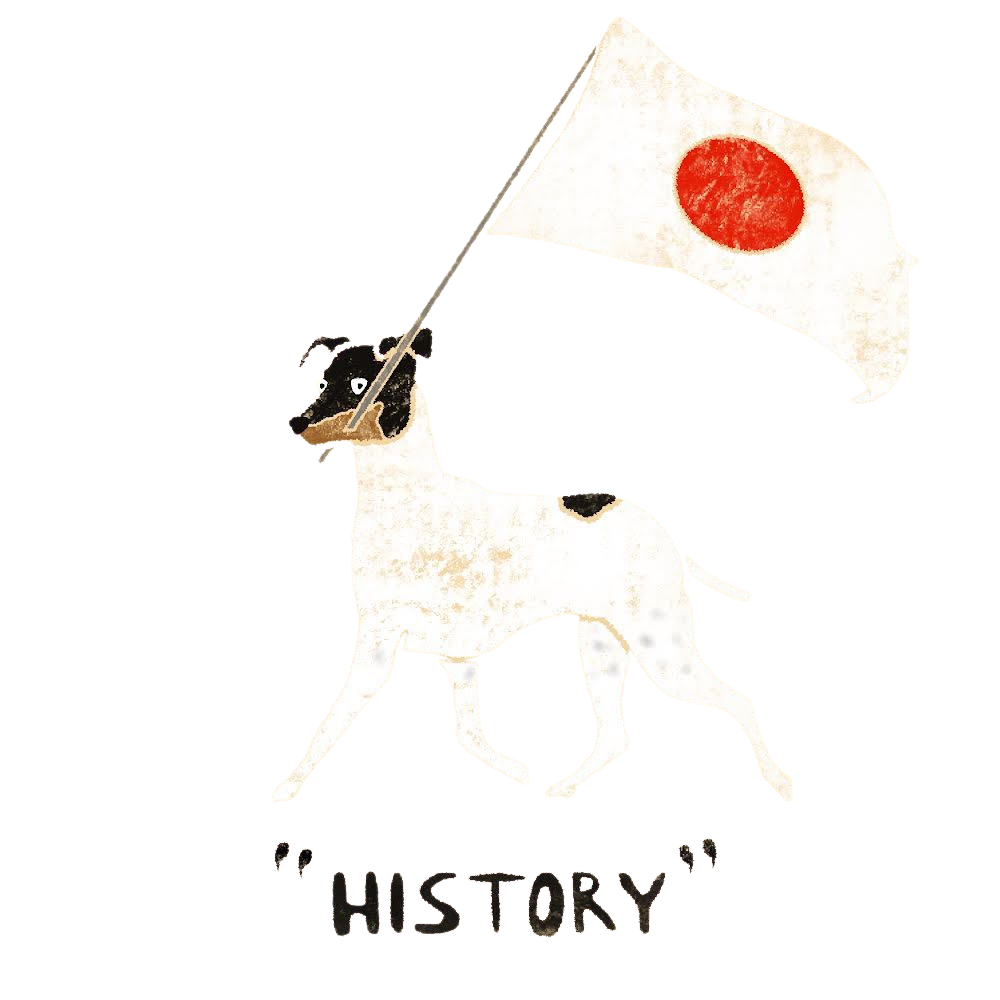During the Edo era (around 1700) a primitive type of Smooth Fox Terrier from the Netherlands came to the Nagasaki port. This terrier mated with a small Japanese native dog, creating a small terrier-type offspring. Soon later the offspring mated with various breeds like the Italian Greyhounds and by 1900, at the end of the Meiji era, in the Kobe area was a dog referred to as the Kobe Terrier (神戸テリア). This terrier looked like a mix of the current Smooth Fox Terrier and the Japanese Terrier. The Kobe Terriers still varied in size and types, but it was quite well known as the first terrier breed to be developed in Japan.
The Kobe Terriers and their grand dogs were also referred to as the Mikado Terrier (ミカドテリア) or Oyuki Terriers (お雪テリア) and were well-loved by the locals.
Later on, in the Taisho period (1916), in Hyogo in the Nada area a dog named Kuro-Go (クロ号) the founding dog of the Japanese Terrier appeared. This dog was a result of a breeding of the Toy Manchester Terrier and the Toy Bull Terrier. Kuro-Go and the Kobe Terriers were bred, creating a small short-haired dog that looked like today’s Japanese Terrier.
Thereafter, mainly in the Osaka prefecture, the close breeding of the offsprings started. After ten or so years in the 1930s in the Showa period, the breed was officially established with written standards.
The breed were mainly kept as a companion and a small watch dog. With their temperament and great natural senses they took their jobs seriously. They have also been evidence showing them used for vermin hunting, but the sources are limited.
Until around the 1940s, Japanese Terriers were easily spotted in most major cities in Japan, however when World War II happened and when the Western breeds became more popular, the breed took a rapid decrease in numbers. By the 1980s Japanese Terriers were on the verge of extinction. To this day they are still slowly working on their population with around 500~600 of them left worldwide.
The Kobe Terriers and their grand dogs were also referred to as the Mikado Terrier (ミカドテリア) or Oyuki Terriers (お雪テリア) and were well-loved by the locals.
Later on, in the Taisho period (1916), in Hyogo in the Nada area a dog named Kuro-Go (クロ号) the founding dog of the Japanese Terrier appeared. This dog was a result of a breeding of the Toy Manchester Terrier and the Toy Bull Terrier. Kuro-Go and the Kobe Terriers were bred, creating a small short-haired dog that looked like today’s Japanese Terrier.
Thereafter, mainly in the Osaka prefecture, the close breeding of the offsprings started. After ten or so years in the 1930s in the Showa period, the breed was officially established with written standards.
The breed were mainly kept as a companion and a small watch dog. With their temperament and great natural senses they took their jobs seriously. They have also been evidence showing them used for vermin hunting, but the sources are limited.
Until around the 1940s, Japanese Terriers were easily spotted in most major cities in Japan, however when World War II happened and when the Western breeds became more popular, the breed took a rapid decrease in numbers. By the 1980s Japanese Terriers were on the verge of extinction. To this day they are still slowly working on their population with around 500~600 of them left worldwide.













